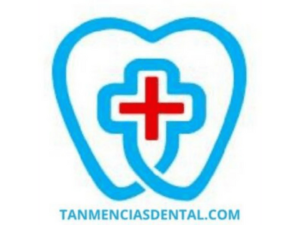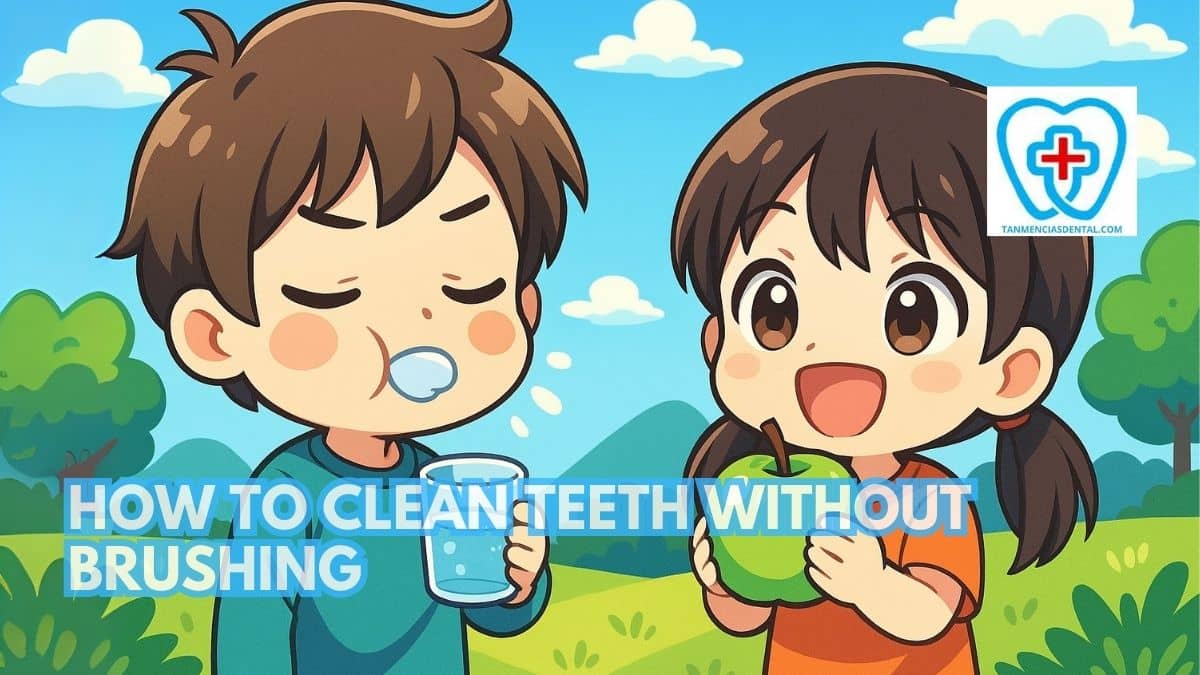Sometimes brushing is not possible, but keeping your mouth clean is still important.
Knowing how to clean teeth without brushing can help prevent plaque, bad breath, and other oral problems when you are away from home or do not have a toothbrush.
Simple actions like rinsing, chewing certain foods, or using special cleaning tools can keep your teeth fresh until you can brush again.
These methods work best when used as a backup, not as a replacement for daily brushing with fluoride toothpaste.
We’ll explain different ways to care for your teeth in these situations so your mouth stays healthy and comfortable.
1. Not a Replacement, But a Support: Brushing vs. Alternative Techniques
While brushing remains the most effective method for cleaning teeth, there are situations when you may need other options to keep your mouth clean.
These alternative techniques are useful for times when you are traveling, at work, or in places where cleaning your teeth without a toothbrush is the only choice.
You can rinse with saline or plain water, chew sugar-free xylitol gum, or eat crunchy fruits and vegetables to help remove food particles and reduce bacteria.
Some people also carry a small tube of toothpaste to apply directly to teeth and gums before rinsing, which can freshen the mouth until they can brush.
Even with these options, it is important to know that nothing can fully replace the benefits of regular brushing and flossing.
Brushing removes plaque from the surfaces of teeth, while flossing cleans between them, where food and bacteria often hide.
Using alternative methods is a way to limit plaque buildup and protect your teeth until you can use a toothbrush and toothpaste again.
By combining both regular cleaning habits and backup methods, you can keep your mouth healthier in different situations.
🦷 Brushing Up on Basics: Can You Spread Gingivitis to Others?
2. The Power of Plain Water: A Simple Yet Effective Rinse
Rinsing your mouth with plain water is a simple yet effective way to maintain oral hygiene.
Swishing water around your mouth can help dislodge food particles stuck between your teeth and reduce the amount of bacteria.
It’s especially useful after meals when you don’t have immediate access to a toothbrush.
This method helps prevent plaque buildup and keeps your breath fresh.
Incorporating this habit into your daily routine can significantly contribute to your oral health.
🦷 Brushing Your Teeth Too Hard? You Might Be Doing More Harm Than Good!
3. Chewing Your Way to Clean Teeth: The Xylitol Advantage
Chewing sugar-free gum that contains xylitol can be a beneficial alternative to brushing.
Xylitol is a natural sweetener that helps reduce the growth of bacteria that cause cavities.
Chewing gum stimulates saliva production, which is essential for neutralizing acids and washing away food particles.
This method can be particularly useful after meals or snacks when brushing isn’t convenient.
Regular use of xylitol gum can enhance oral hygiene and protect against tooth decay.
🦷 When Can You Eat After Brushing Your Teeth?
4. Nature’s Toothbrush: Crunchy Fruits and Saliva Production
Eating crunchy fruits and vegetables, such as apples, carrots, and celery, can help clean your teeth naturally.
These foods act like natural toothbrushes, scrubbing away plaque and food particles as you chew.
Additionally, the act of chewing stimulates saliva production, which is crucial for washing away debris and neutralizing harmful acids.
Saliva also contains enzymes that help protect teeth from decay.
Incorporating these foods into your diet can provide a tasty and effective way to maintain oral hygiene when brushing isn’t possible.
🦷 How to Find the Best Dental Implants in Marikina Clinics and Specialists

5. Soothing and Cleansing: The Benefits of Saline Solution
A saline solution, made by mixing a teaspoon of salt in a cup of warm water, can be an effective mouth rinse.
This simple mixture helps reduce bacteria in the mouth, soothes inflamed gums, and aids in healing minor oral wounds.
Rinsing with a saline solution can also help loosen food particles stuck between teeth and freshen breath.
It’s an excellent alternative when you need to clean your mouth but don’t have access to a toothbrush.
Using a solution regularly can support your overall oral health and hygiene routine.
🦷 Can You Catch Gingivitis? Brushing Up on Contagious Gum Disease
6. Using Alcohol Free Fluoride or Nano Hydroxyapatite Mouthrinses
Alcohol free fluoride or nano-hydroxyapatite mouthrinses are a type of mouthwash that can help strengthen weak enamel and reduce the risk of cavities.
They are more effective than plain salt water because they add minerals that repair early damage and protect the surface of your teeth.
To use, measure about two to four teaspoons after a meal, swish it around your mouth for thirty to sixty seconds, and then spit it out.
Avoid rinsing with plain water afterward so the minerals from the mouthwash stay on your teeth for a longer time.
Choosing an alcohol free formula helps prevent dry mouth and makes the rinse more comfortable to use for people with sensitive mouths.
These rinses should not be used by children who may accidentally swallow them, as the ingredients are meant to be spit out.
🦷 Flossing for the Win: Best Floss for Gingivitis and Healthy Gums
7. Don’t Forget Your Tongue! Techniques for a Fresher Breath
Cleaning your tongue is essential for preventing bad breath and maintaining oral hygiene.
The tongue can harbor bacteria and food particles, which contribute to unpleasant odors.
Using a tongue scraper or the back of your toothbrush, gently clean your tongue from back to front.
This practice helps remove bacteria and promotes fresher breath.
Including tongue cleaning in your daily routine can significantly improve your oral health and overall freshness.
🦷 How Much Does It Cost for a Dental Checkup?
8. Flossing on the Fly: Alternatives for Busy Schedules
Flossing is crucial for removing food particles and plaque between teeth, but it’s not always convenient.
For busy schedules, floss picks and interdental brushes offer quick and effective alternatives.
These tools are easy to carry and can be used discreetly after meals.
Regular flossing helps prevent cavities and gum disease by reaching areas that toothbrushes can’t.
Incorporating these alternatives into your daily routine ensures you maintain good oral hygiene even when you’re on the go.
🦷 How Long Should You Brush Your Teeth With Braces?
9. Convenience at Your Fingertips: Dental Wipes Explained
Dental wipes are a practical solution for cleaning teeth when you don’t have access to a toothbrush.
These pre-moistened wipes are designed to remove plaque, food particles, and bacteria from your teeth and gums.
They are especially useful for travelers, busy professionals, and parents with young children.
Simply wrap a wipe around your finger and gently rub it over your teeth and gums.
Dental wipes are a convenient, on-the-go option to maintain oral hygiene and freshen your breath.
🦷 How a Timer for Brushing Your Teeth Can Make You a Brushing Master
10. Keeping it Professional: The Importance of Dental Checkups
Regular dental checkups are crucial for maintaining optimal oral health, even if you use alternative cleaning methods.
Dentists can identify and address issues that may not be noticeable through home care alone, such as cavities, gum disease, and oral cancer.
Professional cleanings remove tartar and plaque buildup that at-home methods can’t handle.
Scheduling biannual visits ensures that your teeth and gums remain healthy and any problems are caught early.
Combining regular checkups with alternative cleaning techniques provides comprehensive dental care.
🦷 How To Make Brushing Teeth Fun For Toddlers
11. The Impact of Diet: Foods That Naturally Clean Your Teeth
Certain foods can help keep your teeth clean and support overall oral health.
Dairy products like cheese and yogurt neutralize acids in the mouth, protecting against enamel erosion.
Fibrous vegetables like carrots, celery, and spinach act as natural scrubbers, removing plaque and stimulating saliva production.
Nuts and seeds provide essential nutrients that strengthen teeth and gums.
Incorporating these foods into your diet can enhance your oral hygiene efforts and promote a healthier mouth.
🦷 Local Family Dentists in Marikina
👨⚕️ Conclusion
Incorporating these alternative methods can significantly enhance your oral hygiene routine.
They provide practical solutions for maintaining clean teeth when traditional brushing isn’t possible.
From using plain water and xylitol gum to eating crunchy fruits and using dental wipes, these techniques help bridge the gap in your dental care.
Regular dental checkups and a diet rich in teeth-friendly foods further support your oral health.
By integrating these alternatives, you can ensure comprehensive and effective dental care, keeping your smile bright and healthy.
😊 Self-Promotion
Visit Tan-Mencias Dental Clinic in Parang, Marikina City, for top-notch dental care in a friendly and welcoming environment.
Our dedicated team is here to ensure your smile stays bright and healthy.
For any questions or concerns, you can call us at 9171451074, send a message through our Facebook page, or use our website’s contact form.
We’re committed to providing personalized care and making your dental experience as pleasant as possible.
Contact us today, and let us help you achieve your best smile!

